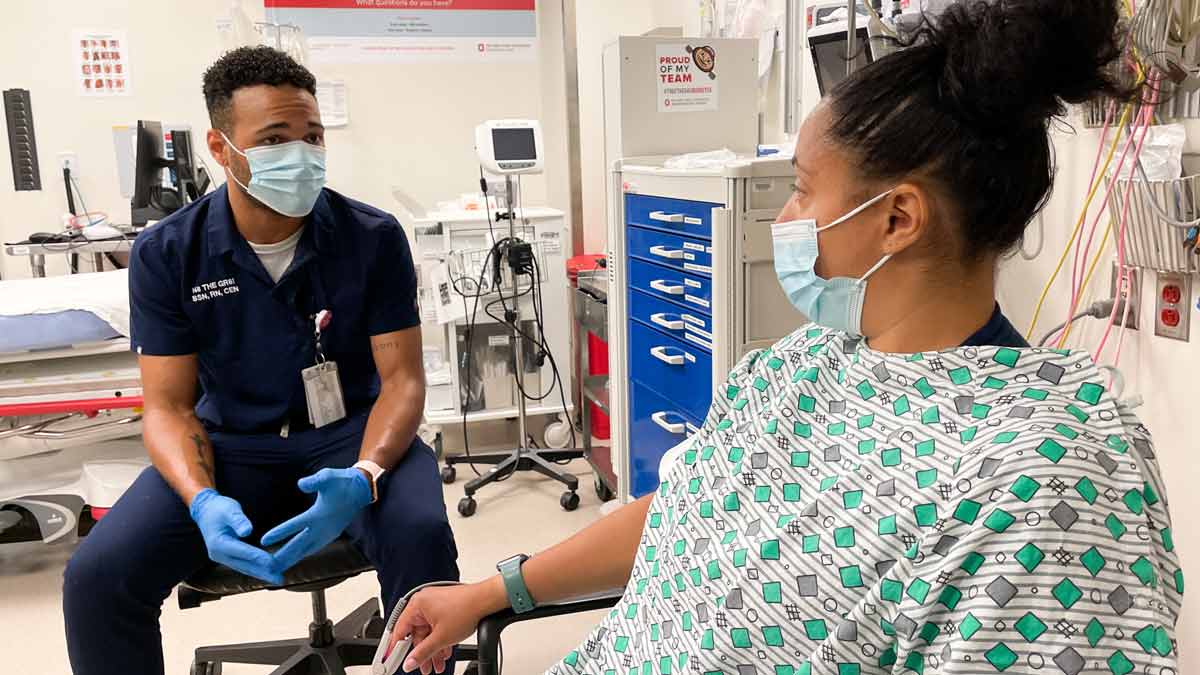Why you need to talk about your end-of-life plans
 It’s a difficult conversation for many: talking with your loved ones or your doctor about your end-of-life wishes. But it’s a conversation we all need to have to make sure our preferences and wishes are carried out.
It’s a difficult conversation for many: talking with your loved ones or your doctor about your end-of-life wishes. But it’s a conversation we all need to have to make sure our preferences and wishes are carried out.
Before I delve into how to have the conversation, let’s start with the terminology:
- Advance care planning: This type of planning involves understanding and considering decisions ahead of time that may need to be made for your future medical care. It may involve discussions with family members and medical providers, as well as the completion of legal documents.
- Healthcare power of attorney: A healthcare power of attorney is someone you designate to make decisions in the event that you become incapacitated.
- Living will: A living will is a legal document that outlines the type of care you want in very specific circumstances if you’re unable to make decisions for yourself.
- Advance directive: The living will and healthcare power of attorney form the basis of an advance directive.
- Do-not-resuscitate order: A do-not-resuscitate (DNR) order lets healthcare providers know you don’t want CPR if your heart stops beating or you stop breathing. There are two types – DNR comfort care and DNR comfort care arrest. The main difference is when they’re activated. A DNR comfort care only allows comfort care before and when your heart or breathing stops. A DNR comfort care arrest allows life-saving measures before your heart or breathing stops.
- Physician order for life-sustaining treatment: Available in some states, a physician order for life-sustaining treatment (POLST) outlines exactly what you want – full treatment, selective treatment or comfort-focused treatment – in an emergency situation at your home or in a healthcare facility.
Now that I've gone over the terminology, let’s break down when you need to start planning, how often you need to update your plans and who you should tell your plans.
Starting end-of-life planning
It may seem early, but I think everyone 18 and older should have a healthcare power of attorney. A lot of people work on advance directives when they involve children as part of their estate planning, while others look into it when they’re diagnosed with a chronic illness, such as congestive heart failure. Many people start thinking about end-of-life planning around age 65, when they approach retirement and enroll in Medicare. Regardless of when you start, any of these milestones are good times to re-evaluate your end-of-life planning and discuss your preferences with your loved ones.
Start by having a conversation with your family about who you would like to speak for you and by making sure your doctor has any advance directives that you may have already filled out. Your doctor can also guide you through how to complete advance directive forms. An attorney may be able to help, as well. However, you don’t have to have an attorney to complete advance directives. Medicare provides some coverage for advance care planning appointments with your physician.
When you have an advance care planning appointment with your physician, be prepared to share details about family dynamics, preferred decision-makers and values you wish to consider in making healthcare decisions. Your doctor may talk to you about your overall health and your thoughts on particular medical treatments. Your doctor (and medical team) may walk you through a variety of scenarios to help you flesh out your plans.
Revising end-of-life plans
A good rule of thumb is to review your end-of-life plans every five to 10 years. Once you turn 65, I recommend talking with your healthcare provider about your advance directives during your yearly check-up. You should also review end-of-life plans if you have a new diagnosis, like cancer, or have a change to your healthcare power of attorney due to death or divorce.
Sharing end-of-life plans
Generally, healthcare providers are only going to go looking for advance directives if they have some circumstance that warrants it. So once you have your plans in place, you need to share them early and often.
Make sure the person you’ve designated as your healthcare power of attorney knows your preferences and talk about them frequently. End-of-life can be emotional, so make sure you trust your healthcare power of attorney to follow through on your wishes. Talking to your entire family about your preferences can also help make sure everyone is on the same page in knowing what you’d want.
Take your living will and healthcare power of attorney to your doctor. Ask them to scan the forms into your medical record. Your doctor may also write a note recording your discussion in your medical record. That way, if you’re hospitalized, your care team will be able to see that you have an advance directive on file, so they know to consult it.
Keep a card in your wallet stating that you have advance directives, along with contact information for your healthcare power of attorney. If you’ve completed a DNR or POLST, put them on a refrigerator or on a bedroom wall so that emergency medical personnel will see them.
Talking about end-of-life may seem uncomfortable, but it’s essential so that you receive care that’s in line with your values and wishes. Your healthcare provider isn’t going to use end-of-life discussions to withhold care from you. To the contrary: These conversations help your healthcare team make sure you get the type of care you’d want by honoring your preferences.
Seuli Bose Brill is a primary care physician at The Ohio State University Wexner Medical Center. She’s dual board certified in internal medicine and pediatrics.
Adding your end-of-life plans to MyChart
Connecting your end-of-life plans with your online health portal, such as MyChart, is another important step in the process. Through MyChart, accessible via the Ohio State MyHealth app, patients can add Advanced Care Planning documents, change contact information for family and friends they've designated to assist with care decisions and learn about local resources available to assist with these decisions.




